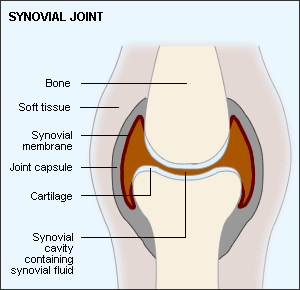7 Major Effects of Friction (with illustrations)
Compiled by Stanley Udegbunam ||updated Oct 13, 2020
In today’s article, we’ll be looking at the different effects of friction.
But before then, Let’s have a quick overview of friction.
Overview
Overview of Friction
Friction is the resistance between contacting bodies when one moves relative to another.
It’s applicable in every sphere of life and this makes it one of the fundamental topics in physics.
There are three major types of friction.
- Static friction: friction force between an object at rest relative to a surface.
- Kinetic friction: friction force between surfaces that moves or slides relative to each other.
- Rolling friction: friction force that resists the rolling motion of an object against a surface.
Major Effects of friction
- Friction causes wear and tear in mechanical parts.
- We are able to walk because of friction
- Vehicles rely on friction for accelerating and decelerating.
- Friction produces heat for body warmth
- Heat generated from friction can cause ignition or start up fire.
- Friction is present in synovial joints.
- Friction causes a loss in power.

Detailed Explanation of Friction Effects
1. Wear and tear in mechanical parts.
Friction is the major cause of wear and tear in mechanical parts of automobiles and engines.
If left unattended to, the end result can be disastrous.
Car components like clutches, brake pads, and brake disc often wear off due to continuous surface contact.
This the reason why lubricants and grease are often applied to moving parts.
Effective lubrication will lead to a prolonged machine life and reduced heat buildup.
2. Thankfully, we are able to walk as a result of friction.
When you walk, the backward movement of our feet exerts a force on the ground as the other foot moves forward.
When this force is exerted on the ground, then an equal and opposite force is exerted by the ground on our feet.
Downward push by our feet = Equivalent Upward push by the ground
This agrees with Newton’s 3rd law of motion which says that action and reaction are equal and opposite.
Without this friction, your feet would slip out from under you, making it difficult to walk.
Friction is also responsible for running, jogging and any human activity that requires motion.

image credit: @lexonart / instagram.com
A lady playfully chasing after her kid brother in the streets of Jamaica, Africa
3. Apart from human movement, vehicles rely on friction for accelerating, decelerating, and changing direction.
When you step on your car brake, the car comes to a stop immediately or gradually depending on the mode of application.
This is because kinetic friction exists between the car tires and the coal tar upon which you ride.

There are so many things that can go wrong if this friction isn’t present in the magnitude required.
A sudden reduction in traction can lead to loss of control and in most cases, accidents.
Without friction, a moving object will never come to stop.
The friction that exists between the contact surface of a rolling object is called rolling friction, as defined above in the friction overview.
See rolling friction examples here: Detailed Examples of Rolling Friction
4. Friction produces heat that helps in keeping the body warm.
During the winter period or cold seasons, we often rub our palms together.
This rubbing action generates minimal heat and helps keep the body warm.
5. Friction causes ignition
Can be seen as one of the major effects of friction.
In the absence of a lighter or matches, we can strike sticks and stones together to produce fire
The friction between the contacting surfaces converts the kinetic energy into thermal energy.

image credit: Paul Banton/ Shutterstock
These are warriors from the Masai tribe in Kenya, Africa. They produce fire for domestic purposes by rubbing two dry sticks together.
6. Friction is present in synovial joint
Static and kinetic friction are both present in joints.
The majority of joints in the body are synovial joints.
A synovial joint is the joint found between bones that move against each other, such as the joints of the limbs (e.g. shoulder, hip, elbow, and knee).
The body uses various methods to decrease friction in joints including synovial fluid.
Therefore, Synovial fluid serves as a body lubricant and it decreases the friction coefficient between bone surfaces in synovial joints.

Synovial joints allow for smooth movements between the adjacent bones.
7. Friction causes a loss of power.
The efficiency of machines is never 100 % because work must be done to overcome friction.
About 20% of a machine’s power is usually lost to friction.
Conclusion
Since friction is needed to maintain grip and responsible for motion and other things mentioned above;
We all can then agree that friction is important and the world will be highly unbalanced without it.
Nevertheless, they are some bad effects, like machine wear and power loss.
20% power loss is a very huge loss especially when you consider the monetary value and the man-hour.
That’s why it’s very important to reduce or mitigate friction loss to the lowest minimum.
Reduce heat buildup by lubricating components and changing worn-out parts.
This will not only lead to prolonged machine life but also a higher efficiency.
Now, It’s Your Turn
That’s it… our article on the 7 major effects of friction✨.
But I’m sure there are so many other friction effects in the world.
So I’ll like to hear from you…
What other effects of friction can you think of?
Share your thoughts and answers with us in the comment section below.


